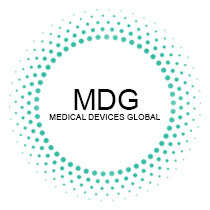Artificial Intelligence (AI) is revolutionizing the healthcare industry, particularly in the realm of medical devices. As AI-driven medical technologies continue to evolve, so do the regulatory frameworks governing them. In this article, we explore the dynamic regulatory landscape surrounding AI-driven medical devices and the implications for manufacturers, healthcare providers, and patients.
1. Evolving Definitions and Classification
Regulators are reevaluating their definitions and classifications of medical devices to accommodate AI-driven technologies. Machine learning algorithms, diagnostic AI, and AI-powered decision support systems are among the innovations subject to regulatory scrutiny. Clear guidelines are essential to ensure these technologies meet safety and performance standards.
2. Data Privacy and Security
AI-driven medical devices rely heavily on patient data, raising concerns about data privacy and security. Regulatory agencies are strengthening requirements for data protection, encryption, and secure transmission. Ensuring compliance with these regulations is crucial for safeguarding patient information.
3. Clinical Validation and Evidence Requirements
Regulators are focusing on the robustness of AI algorithms and their clinical validation. Manufacturers of AI-driven medical devices must provide comprehensive evidence demonstrating the safety and efficacy of their technologies. Regulatory agencies are developing guidelines for assessing AI algorithms’ reliability and generalizability across diverse patient populations.
4. Post-Market Surveillance
Continuous monitoring of AI-driven medical devices is essential to detect and address potential issues promptly. Regulators are enhancing post-market surveillance mechanisms to ensure the ongoing safety and effectiveness of these technologies. Timely reporting of adverse events and real-world data analysis are crucial components of these efforts.
5. Software as a Medical Device (SaMD)
AI-driven software components are often integral to medical devices. Regulators are developing frameworks to assess SaMD products, ensuring they meet rigorous safety and performance standards. This includes software for diagnostic purposes, treatment recommendations, and predictive analytics.
6. Regulatory Harmonization
Efforts are underway to harmonize regulations across different regions and countries to facilitate the global adoption of AI-driven medical devices. Initiatives like the International Medical Device Regulators Forum (IMDRF) aim to standardize regulatory processes, reducing barriers to market access.
7. Ethical Considerations
The ethical use of AI in healthcare is a growing concern. Regulators are addressing ethical considerations, such as transparency, fairness, and accountability, to ensure that AI-driven medical devices are used responsibly and ethically.
8. Rapid Regulatory Adaptation
The fast-paced evolution of AI technologies requires regulators to adapt rapidly. Agile regulatory pathways are being developed to evaluate and approve AI-driven medical devices efficiently, allowing patients to benefit from innovations without unnecessary delays.
Conclusion: Pioneering the Future of Healthcare
AI-driven medical devices hold immense promise for improving patient care and healthcare outcomes. As these technologies continue to transform the healthcare landscape, regulatory agencies are working diligently to strike a balance between innovation and patient safety. Staying informed about the evolving regulatory landscape is crucial for all stakeholders as they navigate the exciting future of AI-driven medical devices. Medical Devices Global remains committed to providing comprehensive coverage and insights into the dynamic world of AI-driven medical device regulation and its profound impact on the future of healthcare.


